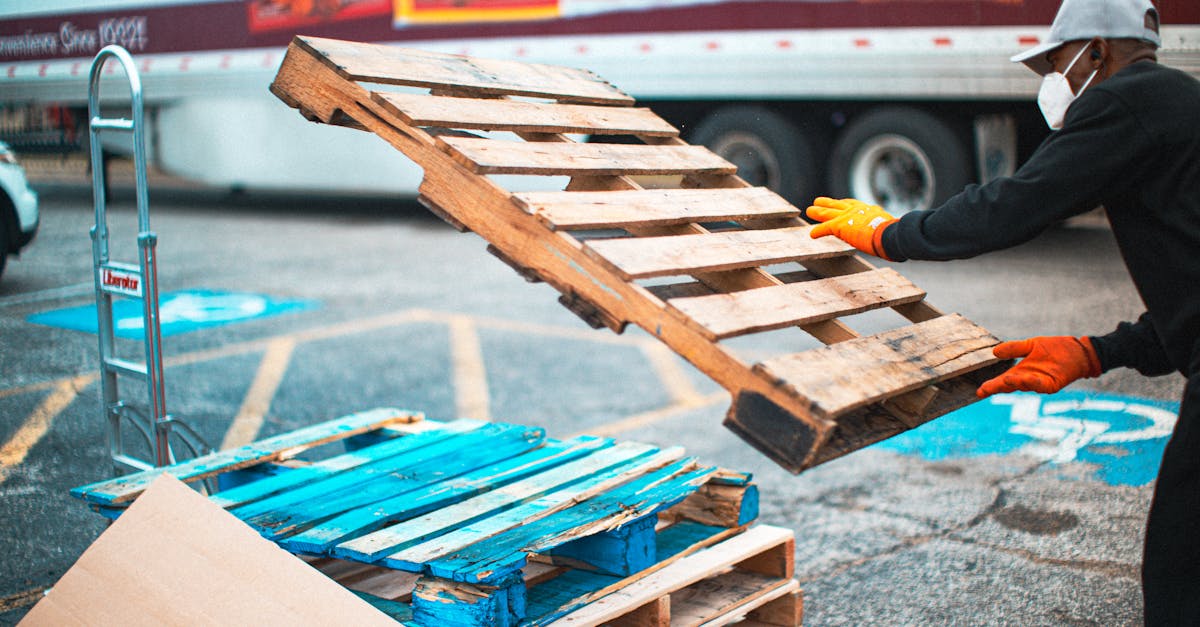
Wooden pallets are an essential part of the shipping and logistics industry, used to transport a wide range of products around the world. However, the handling of wooden pallets can present various safety hazards if not done properly. It is vital to prioritize safety measures when working with wooden pallets to prevent accidents and injuries in the workplace.
In the first place, one of the key safety measures when handling wooden pallets is to ensure proper training for all staff involved in the process. This includes training on how to safely lift and carry pallets, as well as how to stack them correctly to avoid collapses. Without a doubt, proper training can significantly reduce the risk of accidents and injuries caused by mishandling pallets.
Moreover, it is essential to inspect wooden pallets for any damage before use. Cracked or broken pallets can compromise the safety of the entire stack, leading to potential accidents. What’s more, splinters and protruding nails can also pose a risk to employees handling the pallets. By regularly inspecting pallets for damage, you can mitigate these risks and ensure a safer working environment.
Additionally, another important safety measure is to use appropriate personal protective equipment (PPE) when handling wooden pallets. This may include gloves to protect hands from splinters and sharp edges, as well as steel-toed boots to prevent foot injuries. By providing the necessary PPE, employers can help create a safer workplace for their employees.
In the same fashion, it is important to have clear communication and signage in areas where wooden pallets are being handled. This can help alert employees to potential hazards and remind them of proper handling procedures. Similarly, establishing safe work practices, such as avoiding overloading pallets or rushing the handling process, can also contribute to a safer work environment for everyone involved.
Despite this, accidents can still happen, so it’s crucial to have a response plan in place to address any emergencies swiftly and effectively. Ensuring that employees are trained in first aid and know the emergency procedures specific to pallet-related incidents can be a critical aspect of workplace safety.
Furthermore, implementing regular maintenance schedules for pallets and storage areas is another vital safety measure. Regular maintenance can help identify potential risks such as damaged pallets, unstable stacks, or inadequate storage conditions. By addressing these issues promptly, the overall safety of the workspace can be significantly enhanced.
Moreover, considering the environmental impact, it’s essential to have a sustainable approach to pallet management. This includes recycling or repairing pallets whenever possible instead of discarding them after single-use. By promoting sustainability in pallet handling, companies can not only reduce their carbon footprint but also contribute to a safer environment for everyone.
In particular, promoting a culture of safety awareness among employees can make a significant difference in accident prevention. Encouraging workers to report any safety concerns or incidents they observe can help in identifying and rectifying potential hazards promptly. By fostering a safety-conscious attitude among employees, the overall safety of working with wooden pallets can be greatly improved.
Another key point to consider is the importance of regular reviews and updates to safety protocols. As technologies and best practices evolve, it is crucial to adapt safety measures accordingly to ensure they remain effective and relevant. By staying informed and proactive in updating safety procedures, companies can stay ahead in creating a secure work environment for handling wooden pallets. Read more here
Ensuring Safe Practices When Working with Wooden Pallets
A prime example being the adherence to weight limits when stacking pallets. Exceeding the recommended weight capacity of a pallet can lead to structural failures, risking injuries and damage to products. By following weight guidelines, workers can maintain a secure environment and avoid accidents caused by overloaded pallets.
To further enhance safety, companies should establish an efficient system for reporting and investigating any incidents or near misses involving wooden pallets. This proactive approach allows for the identification of root causes and the implementation of preventive measures to avoid similar occurrences in the future. By encouraging employees to report safety issues and close calls, organizations can continuously improve their safety procedures.
Moreover, it is crucial to involve employees in the development and review of safety protocols related to handling wooden pallets. Workers who are directly engaged in pallet operations can provide valuable insights into potential risks and practical solutions to enhance safety practices. Involving employees in safety discussions can cultivate a sense of ownership and responsibility towards maintaining a safe work environment.
Additionally, regular safety audits and inspections are essential to monitor compliance with safety protocols and identify areas for improvement. These audits can help ensure that safety measures are being followed consistently and effectively across all pallet handling operations. Through routine assessments, companies can pinpoint potential safety gaps and take corrective actions promptly to mitigate risks.
In conclusion, prioritizing safety when working with wooden pallets is fundamental to safeguarding employees and creating a secure workplace environment. By investing in training, regular maintenance, PPE, clear communication, and a culture of safety awareness, businesses can significantly reduce the likelihood of accidents and injuries associated with pallet handling. Proactive safety measures not only protect personnel but also contribute to a more efficient and sustainable pallet management system. Learn more here

Under those circumstances, it is evident that ensuring safe practices when working with wooden pallets is crucial for maintaining a secure and efficient workplace environment. By implementing a comprehensive safety strategy that includes proper training, regular inspections, the use of personal protective equipment, and promoting a safety-conscious culture, companies can significantly reduce the risks associated with pallet handling.
In conclusion, the safety of employees should always be the top priority when dealing with wooden pallets. By following safety protocols, conducting regular maintenance, and fostering a culture of safety awareness, businesses can create a work environment where accidents and injuries are minimized. Ultimately, investing in safety measures not only protects personnel but also enhances productivity and sustainability in pallet management practices. Therefore, companies should continue to review and improve their safety procedures to adapt to evolving technologies and best practices, ensuring a safe and secure workplace for all. Find out more here
